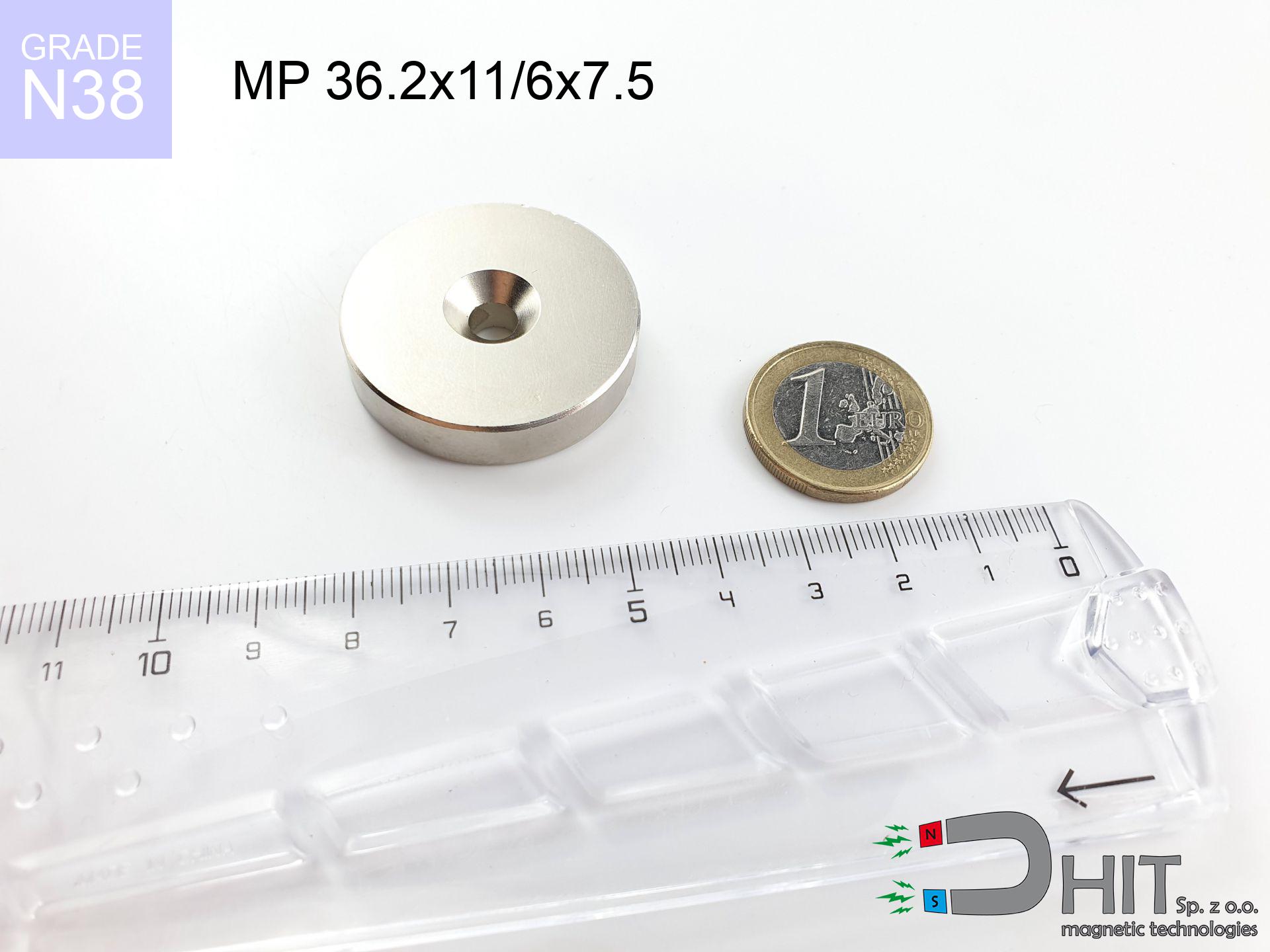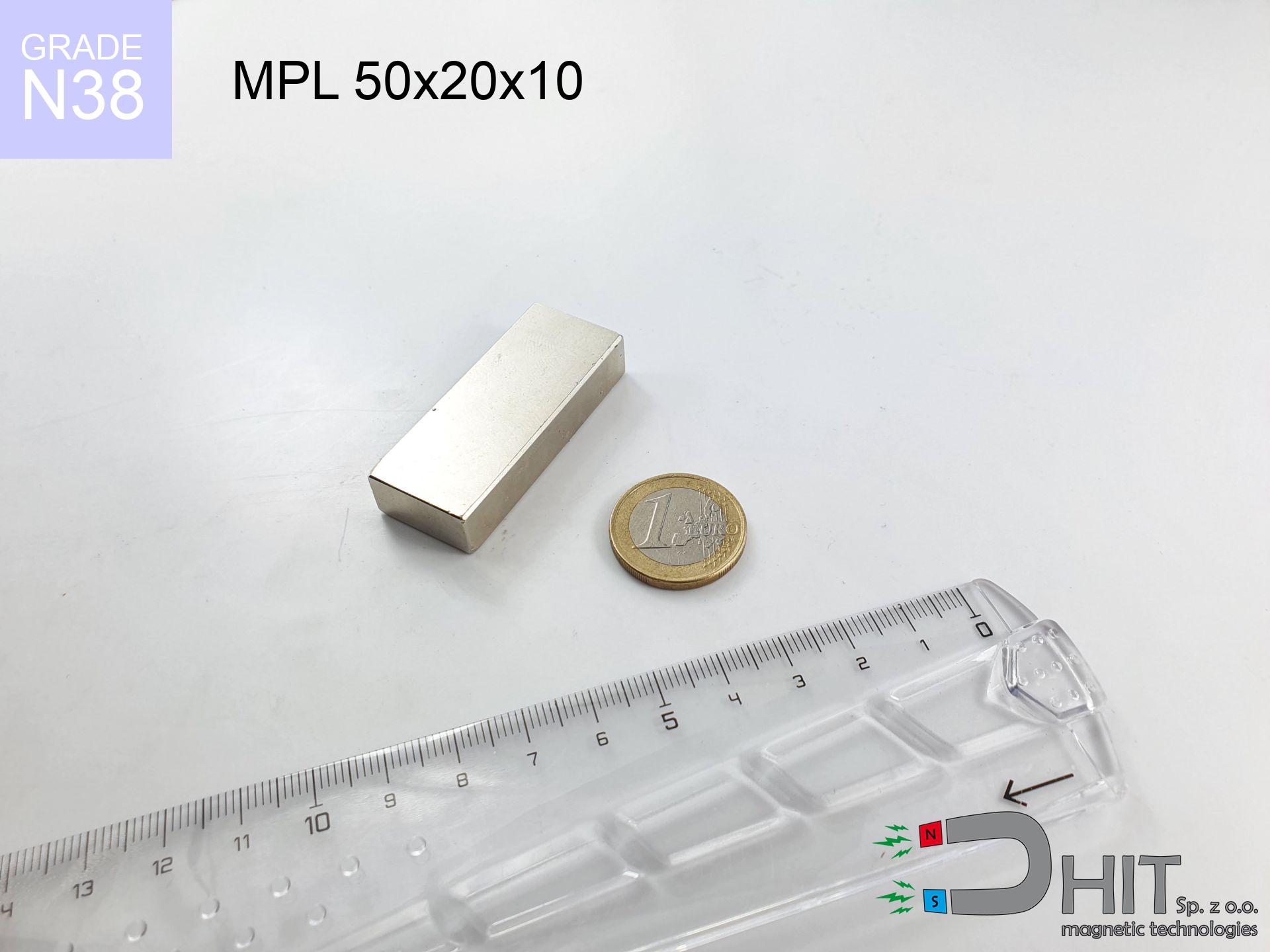UMH 25x8x45 [M5] / N38 - magnetic holder with hook
magnetic holder with hook
Catalog no 310426
GTIN/EAN: 5906301814559
Diameter Ø
25 mm [±1 mm]
Height
45 mm [±1 mm]
Height
8 mm [±1 mm]
Weight
33 g
Magnetization Direction
↑ axial
Load capacity
25.00 kg / 245.17 N
Coating
[NiCuNi] Nickel
14.49 ZŁ with VAT / pcs + price for transport
11.78 ZŁ net + 23% VAT / pcs
bulk discounts:
Need more?
Pick up the phone and ask
+48 888 99 98 98
if you prefer contact us using
contact form
the contact page.
Specifications along with shape of magnets can be checked using our
our magnetic calculator.
Orders placed before 14:00 will be shipped the same business day.
Technical specification - UMH 25x8x45 [M5] / N38 - magnetic holder with hook
Specification / characteristics - UMH 25x8x45 [M5] / N38 - magnetic holder with hook
| properties | values |
|---|---|
| Cat. no. | 310426 |
| GTIN/EAN | 5906301814559 |
| Production/Distribution | Dhit sp. z o.o. |
| Country of origin | Poland / China / Germany |
| Customs code | 85059029 |
| Diameter Ø | 25 mm [±1 mm] |
| Height | 45 mm [±1 mm] |
| Height | 8 mm [±1 mm] |
| Weight | 33 g |
| Magnetization Direction | ↑ axial |
| Load capacity ~ ? | 25.00 kg / 245.17 N |
| Coating | [NiCuNi] Nickel |
| Manufacturing Tolerance | ±1 mm |
Magnetic properties of material N38
| properties | values | units |
|---|---|---|
| remenance Br [min. - max.] ? | 12.2-12.6 | kGs |
| remenance Br [min. - max.] ? | 1220-1260 | mT |
| coercivity bHc ? | 10.8-11.5 | kOe |
| coercivity bHc ? | 860-915 | kA/m |
| actual internal force iHc | ≥ 12 | kOe |
| actual internal force iHc | ≥ 955 | kA/m |
| energy density [min. - max.] ? | 36-38 | BH max MGOe |
| energy density [min. - max.] ? | 287-303 | BH max KJ/m |
| max. temperature ? | ≤ 80 | °C |
Physical properties of sintered neodymium magnets Nd2Fe14B at 20°C
| properties | values | units |
|---|---|---|
| Vickers hardness | ≥550 | Hv |
| Density | ≥7.4 | g/cm3 |
| Curie Temperature TC | 312 - 380 | °C |
| Curie Temperature TF | 593 - 716 | °F |
| Specific resistance | 150 | μΩ⋅cm |
| Bending strength | 250 | MPa |
| Compressive strength | 1000~1100 | MPa |
| Thermal expansion parallel (∥) to orientation (M) | (3-4) x 10-6 | °C-1 |
| Thermal expansion perpendicular (⊥) to orientation (M) | -(1-3) x 10-6 | °C-1 |
| Young's modulus | 1.7 x 104 | kg/mm² |
Elemental analysis
| iron (Fe) | 64% – 68% |
| neodymium (Nd) | 29% – 32% |
| boron (B) | 1.1% – 1.2% |
| dysprosium (Dy) | 0.5% – 2.0% |
| coating (Ni-Cu-Ni) | < 0.05% |
Environmental data
| recyclability (EoL) | 100% |
| recycled raw materials | ~10% (pre-cons) |
| carbon footprint | low / zredukowany |
| waste code (EWC) | 16 02 16 |
Other proposals
Strengths as well as weaknesses of Nd2Fe14B magnets.
Benefits
- They retain attractive force for almost 10 years – the drop is just ~1% (according to analyses),
- They are extremely resistant to demagnetization induced by external field influence,
- Thanks to the elegant finish, the layer of nickel, gold-plated, or silver-plated gives an visually attractive appearance,
- Neodymium magnets ensure maximum magnetic induction on a contact point, which increases force concentration,
- Due to their durability and thermal resistance, neodymium magnets can operate (depending on the shape) even at high temperatures reaching 230°C or more...
- Possibility of precise machining as well as adjusting to atypical requirements,
- Fundamental importance in modern industrial fields – they serve a role in magnetic memories, motor assemblies, medical equipment, also technologically advanced constructions.
- Thanks to efficiency per cm³, small magnets offer high operating force, with minimal size,
Disadvantages
- At very strong impacts they can break, therefore we advise placing them in steel cases. A metal housing provides additional protection against damage and increases the magnet's durability.
- Neodymium magnets decrease their strength under the influence of heating. As soon as 80°C is exceeded, many of them start losing their power. Therefore, we recommend our special magnets marked [AH], which maintain stability even at temperatures up to 230°C
- When exposed to humidity, magnets usually rust. For applications outside, it is recommended to use protective magnets, such as those in rubber or plastics, which prevent oxidation as well as corrosion.
- Due to limitations in creating nuts and complex shapes in magnets, we propose using a housing - magnetic holder.
- Health risk to health – tiny shards of magnets pose a threat, if swallowed, which is particularly important in the aspect of protecting the youngest. Furthermore, small elements of these products can disrupt the diagnostic process medical in case of swallowing.
- With mass production the cost of neodymium magnets is a challenge,
Pull force analysis
Magnetic strength at its maximum – what it depends on?
- on a base made of mild steel, effectively closing the magnetic field
- with a cross-section of at least 10 mm
- characterized by even structure
- under conditions of no distance (metal-to-metal)
- under axial application of breakaway force (90-degree angle)
- at room temperature
Determinants of practical lifting force of a magnet
- Clearance – existence of foreign body (paint, tape, air) interrupts the magnetic circuit, which reduces power rapidly (even by 50% at 0.5 mm).
- Angle of force application – highest force is reached only during perpendicular pulling. The resistance to sliding of the magnet along the plate is usually several times lower (approx. 1/5 of the lifting capacity).
- Element thickness – for full efficiency, the steel must be adequately massive. Paper-thin metal restricts the attraction force (the magnet "punches through" it).
- Metal type – different alloys reacts the same. High carbon content worsen the attraction effect.
- Smoothness – ideal contact is obtained only on smooth steel. Rough texture reduce the real contact area, reducing force.
- Thermal environment – heating the magnet causes a temporary drop of force. It is worth remembering the thermal limit for a given model.
Lifting capacity was assessed by applying a steel plate with a smooth surface of optimal thickness (min. 20 mm), under vertically applied force, whereas under shearing force the lifting capacity is smaller. Additionally, even a small distance between the magnet’s surface and the plate reduces the load capacity.
H&S for magnets
Allergy Warning
A percentage of the population experience a sensitization to Ni, which is the standard coating for neodymium magnets. Prolonged contact might lead to dermatitis. We suggest use protective gloves.
Magnets are brittle
Neodymium magnets are ceramic materials, which means they are fragile like glass. Impact of two magnets will cause them breaking into small pieces.
Choking Hazard
Absolutely store magnets away from children. Ingestion danger is high, and the consequences of magnets clamping inside the body are life-threatening.
Finger safety
Big blocks can crush fingers in a fraction of a second. Under no circumstances place your hand between two strong magnets.
Fire risk
Mechanical processing of neodymium magnets poses a fire hazard. Magnetic powder oxidizes rapidly with oxygen and is hard to extinguish.
Warning for heart patients
Warning for patients: Powerful magnets disrupt medical devices. Keep at least 30 cm distance or ask another person to work with the magnets.
Do not underestimate power
Before starting, check safety instructions. Uncontrolled attraction can destroy the magnet or injure your hand. Think ahead.
Electronic devices
Equipment safety: Neodymium magnets can ruin data carriers and delicate electronics (pacemakers, medical aids, mechanical watches).
GPS Danger
Remember: rare earth magnets generate a field that interferes with precision electronics. Maintain a safe distance from your mobile, tablet, and navigation systems.
Demagnetization risk
Keep cool. Neodymium magnets are sensitive to heat. If you need operation above 80°C, ask us about special high-temperature series (H, SH, UH).

![Holder with hook UMH 25x8x45 [M5] / N38 Holder with hook UMH 25x8x45 [M5] / N38](https://cdn3.dhit.pl/graphics/banners/magnet.webp)
![UMH 25x8x45 [M5] / N38 - magnetic holder with hook](https://cdn3.dhit.pl/graphics/products/umh-25x8x45-m5-cep.jpg)
![UMH 25x8x45 [M5] / N38 - magnetic holder with hook - ujęcie 2](https://cdn3.dhit.pl/graphics/products/umh-25x8x45-m5-pib.jpg)
![SM 32x275 [2xM8] / N42 - magnetic separator SM 32x275 [2xM8] / N42 - magnetic separator](https://cdn3.dhit.pl/graphics/products/sm-32x275-2xm8-hac.jpg)
![SM 25x275 [2xM8] / N42 - magnetic separator SM 25x275 [2xM8] / N42 - magnetic separator](https://cdn3.dhit.pl/graphics/products/sm-25x275-2xm8-boc.jpg)



